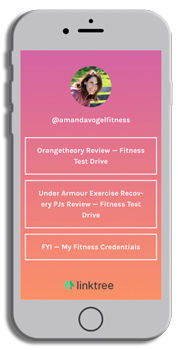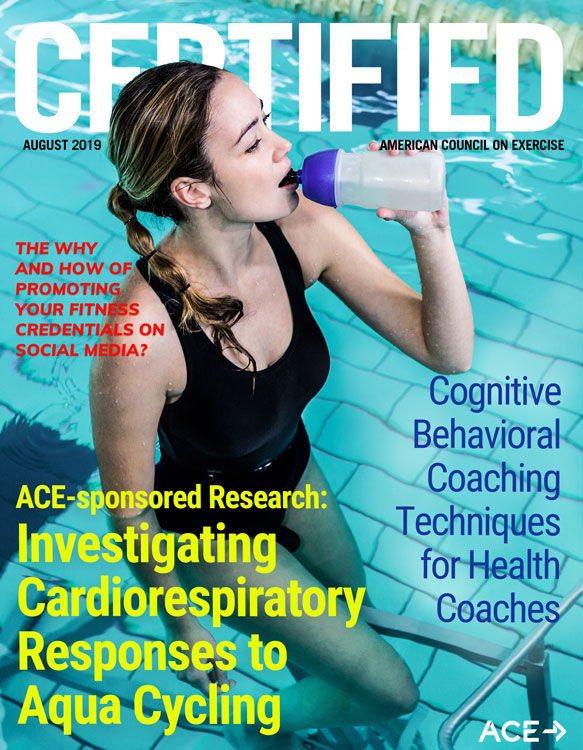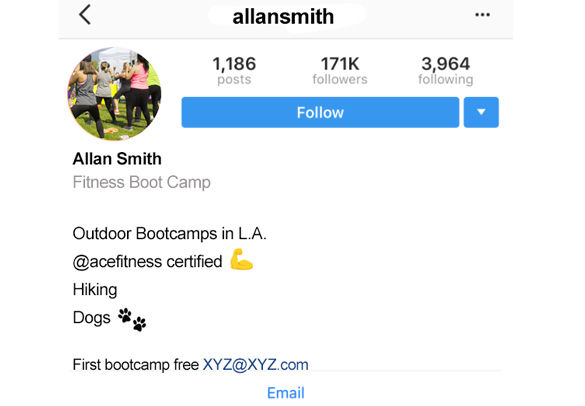
If you spend any time looking at fitness content on social media, you’ve probably already observed that not everyone doling out health/fitness advice and ideas on Instagram, YouTube and other platforms is qualified to do so. This can be aggravating for any health and exercise professional who actually has the credentials and experience to dispense health and fitness advice and does so in a safe and reasonable way.
It doesn’t help that some people seem to equate a huge social following with professional qualifications. Researchers at the University of Glasgow found that popular United Kingdom-based influencers and bloggers with more than 80,000 followers each gave bogus diet and fitness advice eight times out of nine. The results were presented at the European Congress on Obesity (ECO) in Spring 2019. Although this was one small study, it opens the door to further investigation and introspection about what health and exercise pros can do to assert their expertise on social platforms.
While we can’t do anything about how others represent themselves on social media, we can use our own social accounts for good. If we want fitness consumers to be able to spot the difference between helpful and hack advice, we must drive that conversation with explicit education on what it means to possess expert qualifications such as an ACE certification. Just making it clear that you’re ACE Certified is a good first step. Here are some ideas to help you educate social media users about fitness credentials.
Integrate Your Fitness Credentials in Social Bios
How much do you emphasize your qualifications in social bios? Thinking about available word count, you’re able to share a fair amount on the About pages of a YouTube channel or Facebook Business Page. But bio space on Instagram and Twitter is quite tight, so use your limited word count wisely. Keep in mind that any of your social profiles might be the first touch-point for new followers to learn about who you are and what you do.
Despite limited space, both Twitter and Instagram make it easy to add hashtags or tag other accounts in social bios. This is an option if you want to express your affiliation with ACE by using #acefitness or @acefitness. If you include the latter, ACE will receive a notification and is able to approve that you are in fact qualified to reference their account handle in your bio, which further authenticates your expertise. Just keep in mind that people can click on live hashtags and @mentions in your bio, leading them away from your account.
 Sample bios
Sample bios
You won’t be able to explain all your areas of expertise in short social bios. That’s O.K. Add your top one or two professional credentials and be sure to provide people with an option to surf elsewhere for further details. For example, send them to an About page on your website or blog.
However, if you're an Instagram user, you know that the app lets you post only one link at a time in your bio, making it challenging to direct traffic to multiple web pages. For that reason, you might prefer not to park just one link to an About page in that valuable clickable field.
One solution is to use a service such as Linktree (with free and paid options). Linktree syncs to Instagram and provides a dropdown menu displaying multiple links from which users can choose. With this handy tool, you could create a link with a title that says something like, “My Fitness Certifications,” “Learn About My Fitness Credentials” or “Certified by American Council on Exercise.”
Both Facebook Business Pages and Twitter accounts also allow you to “pin” posts to the top of the page. Use this strategy to further communicate about your credentials beyond your bio. The idea is to pin a post that references your qualifications, so visitors who land on your Facebook Business Page or Twitter profile see that post first before they start scrolling. On Instagram, you could do something similar with Highlights, creating a collection of Stories about your expertise that can be viewed any time from your profile.
Mention Your Credentials in Social Posts
Of course, there’s also the real possibility that social users aren't really investigating social bios or About pages to learn more about your (or anyone else’s) qualifications. Fortunately, all is not lost because you presumably still have their attention through your posted content. With this in mind, you’ll want to create a big-picture strategy that allows you to start an ongoing narrative about your qualifications.
That’s not to say you mention your ACE certification in every post. Rather, work it into content in various ways over time. Your regular followers will quickly come to associate your brand with “credentialed fitness expert.”
Think about communicating your credentials in three ways: (1) captions, (2) images and (3) videos.
Captions: Social captions are what you write in a post. Sometimes you might explicitly mention your ACE certification. For example, you could begin a caption with:
- “I just renewed my ACE Personal Trainer certification for another year and…” or
- “I’m studying to become an ACE Certified Health Coach and…”
Other times, you might mention your credentials only in passing as they relate to another topic. For example:
- “Here are my thoughts on XYZ, based on my experience as a Medical Exercise Specialist certified with the American Council on Exercise” or
- “I’ve been an ACE Certified Personal Trainer for 10 years and today was the first time I felt it necessary to…”
It helps to tag ACE in your social captions, as well, when it’s relevant to do so on Facebook, Twitter, Instagram and Instagram Stories. You might also include the #acefitness hashtag. Both of these tactics could increase your post’s reach to people with an interest in ACE; plus, you communicate your affiliation as an ACE health and exercise professional. (Note: Never tag an account or use a branded hashtag such as #acefitness in a caption or Story when the person or company is not related to the post’s content—random tagging is terrible social etiquette.)
Images: Many health and exercise pros have posed in a photo while holding or pointing to their certification certificate. And for good reason: It’s an easy way to publicly celebrate your education accomplishments through a visual medium. What’s more, your followers will pick up on it even if they’re just glancing and scrolling the feed or tapping through Stories.
Some people also enjoy posting memes on social media with messages that inspire health and fitness. If you create your own graphics and don’t already include a watermark with your business name or website, consider doing so and also including something like “ACE Certified Personal Trainer” on the watermark.
Videos: Follow the same rules as above for videos with regard to watermarks and captions. Additionally, consider how you can weave a mention about your certification into your video “script.” For example:
- “As an ACE Certified Group Fitness Instructor, I’ve noticed many people struggle with proper squat technique. So in this video, I’ll demonstrate a few tweaks to help you get it right.”
Many Voices Make a Difference
When true fitness experts use their voices effectively on social media, the unqualified folks have to work harder. Collectively, we can make a difference. It doesn’t take much to start a public dialogue about how you know what you know and why you're confident about the health and exercise advice you share. When fitness consumers need guidance, you have the power to help educate them about where to turn for trustworthy inspiration and information.





 by
by 



 Sample bios
Sample bios
